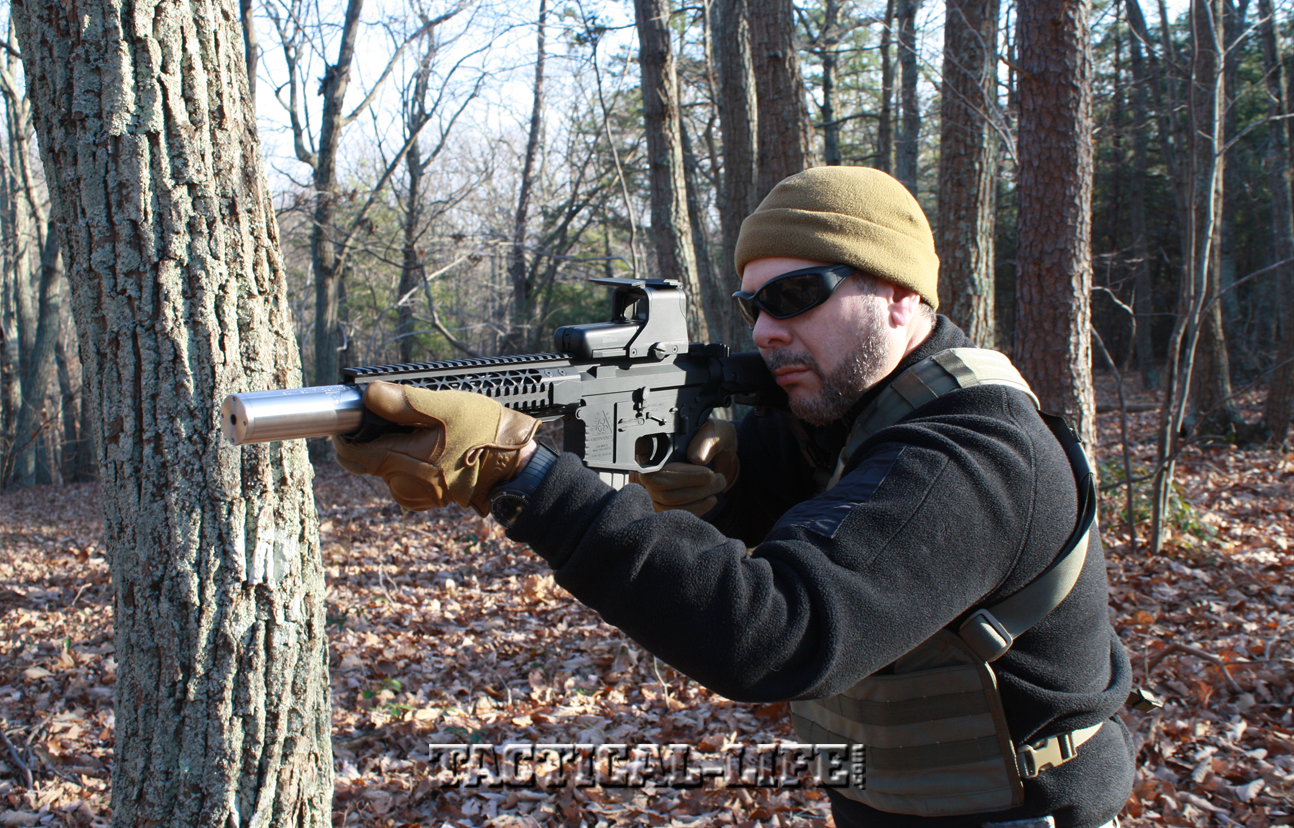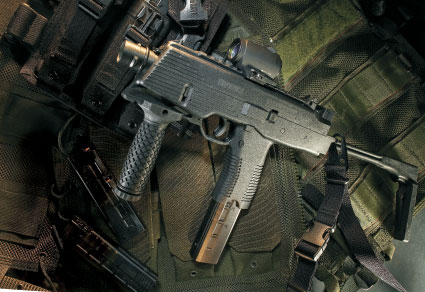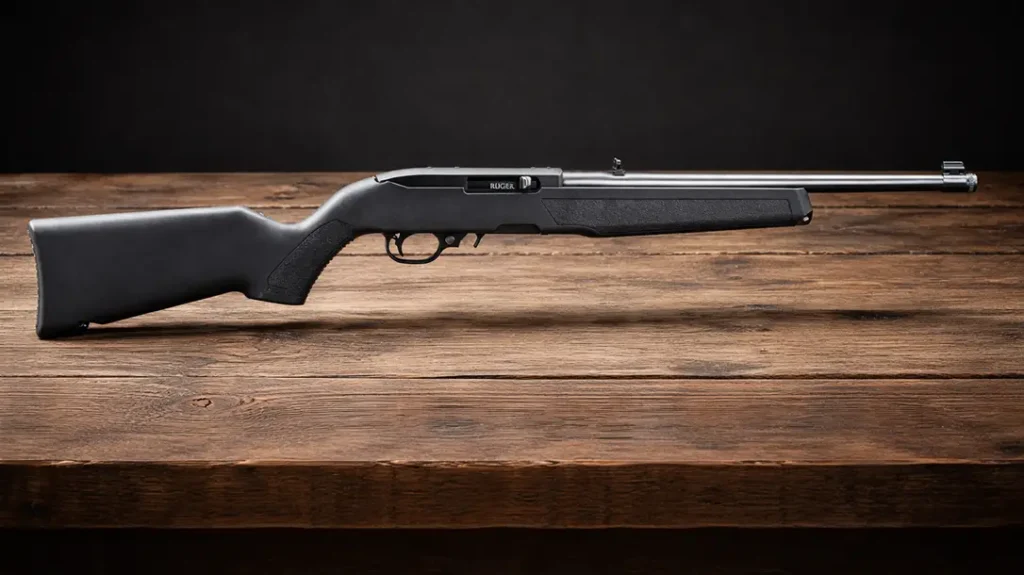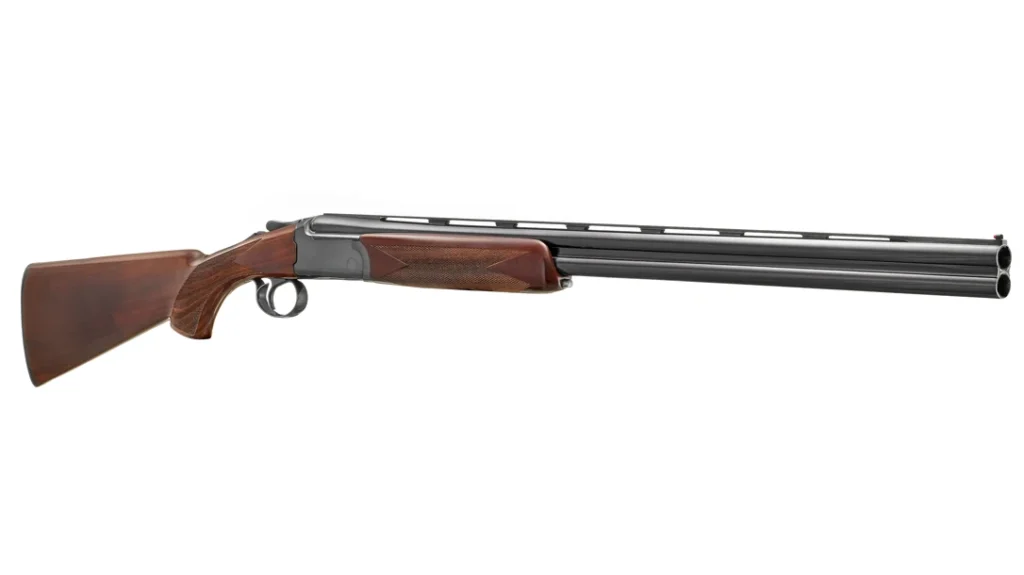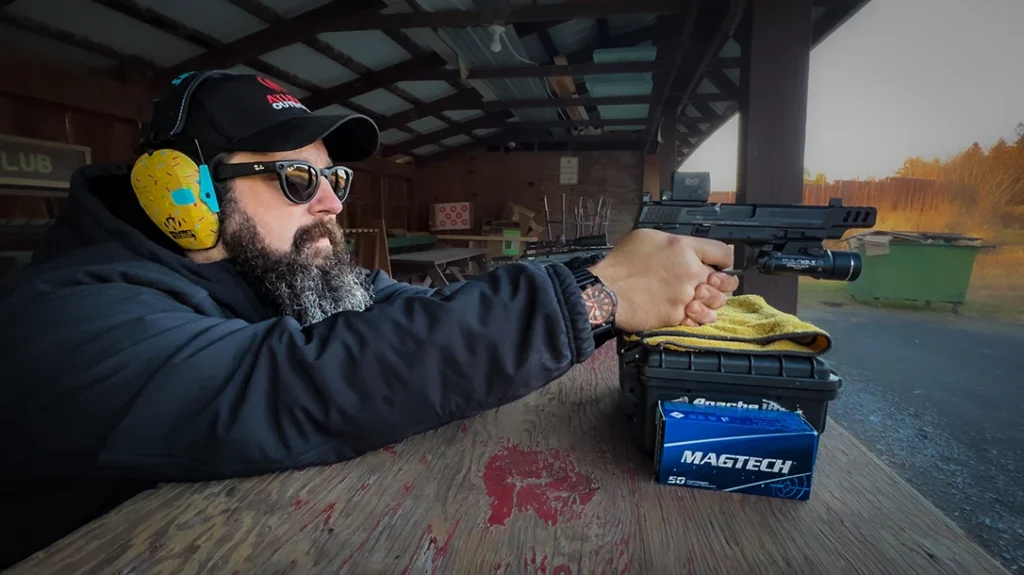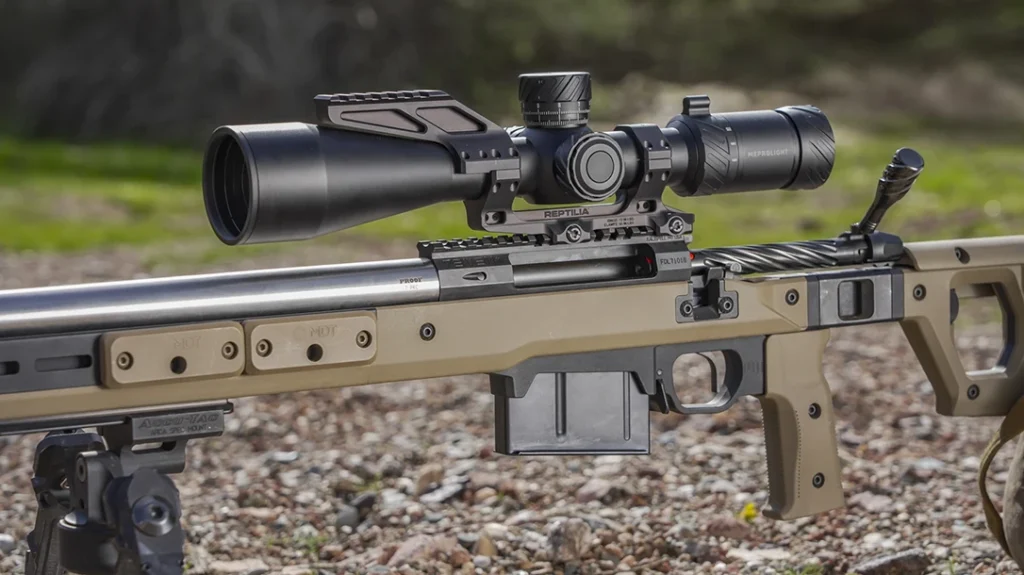Black Rain Ordnance, Inc., (BRO) has been making very high-quality AR-15-style rifles for several years now, and they continue to expand their selection and special features. I had the opportunity to test one of their offerings some time ago and was duly impressed. Everything, from the machined billet upper and lower receivers to the match-grade stainless-steel barrel, was made with a distinct attention to detail, quality and style. Even the company’s Bio-Hazard logo is distinctly etched on every receiver.
Recently, BRO entered into a new, but very much related venture—suppressor manufacturing. The company acquired the assets of HTG Silencers and is selecting the top three models—the Aris, M30-A, and Universal—and rebranding and packaging them with their new line of short-barrel rifles (SBRs).
The most popular HTG suppressor for military applications (including full-auto) and varmint hunting, the Aris provides the maximum noise reduction in a 6-inch can. This silencer produces excellent noise, flash and recoil suppression. The full line of professional suppressors will be full-auto rated and feature stainless-steel construction and a removable end cap for easy disassembly and cleaning.
Advertisement — Continue Reading Below
Suppressor Sense
The suppressor body itself is just a hollow metal tube that attaches to the muzzle of the firearm. Internally it contains multiple separate gas-expansion chambers. These chambers trap the escaping gasses and then release them slowly—though slowly is a relative term. It isn’t slow strictly speaking—just slower than the release absent the suppressor.
This has two effects. First, as the escaping gasses from the burning gunpowder are slowed, the noise they make is subdued. Think of popping a balloon versus slowly letting the air out. Second, since the baffles are temporarily trapping the escaping gasses, any unburned powder that would otherwise exit the barrel and create a more robust muzzle flash is also trapped and burned inside the baffles.
Advertisement — Continue Reading Below
In addition to hiding the muzzle flash and thus helping to conceal the shooter’s location, the firearm’s normal sound signature is disrupted, making locating where the sound of the shot came from more difficult. This happens because, with a suppressor installed, the sound of the shot is louder than the sound of the muzzle blast, and the location from which the listener hears the shot come is the point at which the sonic shock wave, the sonic boom generated by the flying bullet, reaches his or her ear. That point, of course, is not the position of the shooter.
The baffles that divide and create the multiple internal chambers inside the suppressor can have many different shapes and are made from a variety of materials. These variations are designed by the manufacturer to maximize the suppressor’s effectiveness and noise reduction capabilities, as well as its lifespan. Subsonic ammunition eliminates the sonic boom, or the crack of the bullet breaking the speed of sound, and can further reduce the muzzle sound levels by as much as 10 decibels.
Suppressors also reduce recoil in an interesting way. We all know that force equals mass multiplied by acceleration, and that for every force there is an equal and opposite reaction. This is the very substance of the cause of recoil. The bigger and faster the bullet and the smaller the gun, the more recoil the shot produces. But the cause isn’t just the bullet exiting the front of the barrel; the stream of hot propellant gasses, which actually travels faster than the bullet, also contributes to recoil.
Advertisement — Continue Reading Below
Gas doesn’t have much mass, but it does have a lot of acceleration, which has about a threefold effect on force. As such, reducing the velocity of gas has a disproportionate effect on reducing the backwards force (or recoil). By trapping and slowing the release of escaping gasses, the suppressor reduces recoil. Another factor reducing perceived recoil is the added weight of the suppressor attached to the rifle. Also, the baffles themselves act as a muzzle brake, reducing recoil by diverting the gasses backwards and “pulling” the rifle forward. Depending on the size of the cartridge, a good suppressor can reduce recoil by as much a 30 percent. The more powerful the cartridge, the more pronounced the effect will be.
Defining Decibels
A decibel is the term commonly used in acoustics to quantify sound levels relative to a baseline reference point—0 dB—the point above which the average person will begin to hear sound. A quality suppressor can reduce the decibel level of the shot by more than 30 decibels. This is a bit better than your average hearing protection, which provides between 20 and 33 decibels of noise reduction.
A good way to think about noise levels is with various comparisons. Normal conversation takes places at 40 to 60 decibels; at 85 decibels, it is possible to sustain
hearing damage with continuous noise.
Advertisement — Continue Reading Below
A gas-powered chainsaw reaches about 110 decibels, and at 120 decibels hearing damage can occur from a single occurrence. Your ears will hurt at 130 decibels, and a high-powered rifle will produce 160 to 170 decibels of sound. Even the best suppressors are capable of only reducing the sound level of a rifle to the comfortable range, not necessarily the safe range. During extended range use, wearing additional hearing protection is advisable.
BRO’s Blast Beaters
BRO is sticking with the three most popular suppressor models to start off, and all will feature stainless-steel construction and a salt-bath, nitride black finish. The salt-bath process hardens the surface with an application of nitrogen, providing corrosion and wear resistance. All of BRO’s suppressors are screw-on, not quick detach, a configuration that helps produce greater noise reduction and improved barrel harmonics for less point-of-impact shifting.
Advertisement — Continue Reading Below
Fans of .30-caliber rifles will opt for the M30-A, which is ideal for tactical or hunting applications and provides a level of noise reduction ranging between 25 and 29 decibels. The M30-A will comfortably handle everything from 6mm and 6.5mm cartridges to 300 AAC BLK to .308 Win and .300 WM. The M30-A is also full-auto rated, has a simple take-down design for maintenance and is available with multiple thread counts, allowing attachment to any threaded barrel. Measuring 8.5 inches long and weighing 28 ounces, it is also the largest suppressor BRO makes.
Interestingly, .30-caliber suppressors can be used easily with .223-caliber rifles. Of course, a .30-caliber suppressor is larger and heavier than a dedicated .223 suppressor, but the sound reduction is only a few decibels less—an amount not noticeable to the average person.
BRO does offer a dedicated .223 suppressor, the Aris. This miniscule, 6-inch can provides up to 34 decibels of noise reduction and adds only 21 ounces to the rifle’s total weight. Like BRO’s other suppressors, the Aris is stainless steel and easy to disassemble. It’s also rated for full-auto fire and is available in various thread types. BRO is also developing a dedicated and suppressed 16-inch upper receiver featuring a 10-inch barrel and a 6-inch can permanently attached. Customers will have only to complete one NFA transfer form and will be able to place the upper on any compatible AR lower.
Advertisement — Continue Reading Below
When using the .223, one should be mindful of barrel length. Most manufacturers recommend pairing suppressors to barrels at least 10 inches long in order to adequately stabilize the bullet. A shorter barrel may result in a baffle strike from an unstabilized bullet. This is not the case with other calibers, such as the 300 BLK.
For rimfire rifles and pistols, Black Rain Ordnance is producing the Universal, which is being touted as one of the most durable rimfire suppressors available. The stainless steel construction helps prevent corrosion and eases cleaning. Included is a handy disassembly tool, which shows off
the proprietary Epsilon baffles. The Universal will work for all .22 rimfires, from shorts to magnums to .17 rimfire and even the FN 5.7mm. It weights a feathery 9 ounces and has multiple thread options.
Letting It Rain
Advertisement — Continue Reading Below
I had the opportunity to test the .223- and .30-caliber suppressors on a couple of BRO direct-gas-impingement-system ARs. The sound suppression was outstanding, but I did experience a fair amount of back pressure. With an oily bolt carrier, you can expect to get a face full of spray that burned my eyes even though I wore eye protection. Testing it dry however resolved the issue, which would occur with any suppressor and was not a surprise. Gas-piston ARs, I’ve found, alleviate some of the back-pressure effect.
Suppressing the .223 rifle produced just a slight reduction in recoil. Significantly more substantial was the reduction felt on the suppressed .308. Using the suppressor also caused a significant point of shift. With a rifle zeroed prior to installing the suppressor, rounds impacted several inches lower and slightly to the left. The effect is common, and if you are going to fire suppressed you should sight your rifle appropriately.
BRO’s Sam Major provided several of the company’s suppressors for testing and was kind enough to chronograph the rifles suppressed and unsuppressed to show the difference suppression makes with regard to muzzle velocity. Using 18-inch barrels and 77-grain .223 Federal Gold Medal Match and 175-grain .308 Federal Gold Medal Match, we witnessed a 20-fps drop with the former and a 10-fps drop with the latter. Major also measured sound reduction using the same rifles and loads. The .223 rifle’s sound signature dropped from 167 Db unsuppressed to 134 Db with the Aris. Using the M30-A, the .308 rifle went from 168 Db unsuppressed to a suppressed sound level of 141 Db.
Advertisement — Continue Reading Below
Conclusion
BRO states that their suppressors should be cleaned every 400 to 500 rounds. “You do not have to clean them for them to perform, but if you do not clean them regularly, it will be very difficult to get them apart with all the build-up. To clean, take cap off and take the baffles out and use any solvent or Electra sonic cleaner,” said Major.
BRO’s suppressors don’t need a lot of replacement parts. Thanks to their solid construction, the suppressors can fire 10,000 rounds before baffle replacement becomes necessary. In sum, suppressors offer significant advantages for both the tactical and the recreational shooter, and they are legal to own in most states. For more information, visit blackrainordnance.com or call 888-836-2620.
